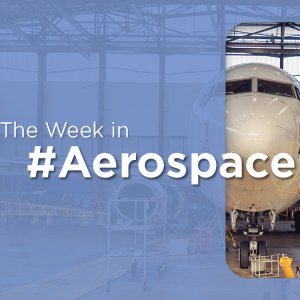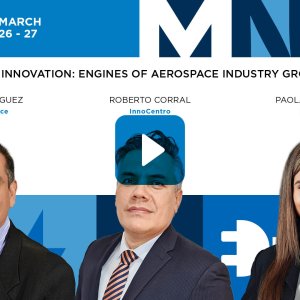Cultural Competitiveness to Drive Mexican Aerospace Industry

STORY INLINE POST
Q: How have you merged innovation with tradition in your values and mission to earn the trust and loyalty of clients?
A: It has definitely been an intense road in which we have focused on providing the best customer service and keeping our clients satisfied. Since 1988, we have placed importance on innovation in advanced high-precision equipment, all supported by our experience of over 34 years.
Our priority is to maintain our leadership position in the market, which has been possible thanks to our human talent. The Mexican workforce is of world-class and we have to continue developing it. We have concluded countless achievements focused on the specific needs of the industrial sector, especially when talking about the aerospace and automotive industries. However, if the results of these studies are not properly used, all effort, time and resources invested are worthless.
Q: How do HEMAQ’s results differ between its local and international operations?
A: We are focused on advanced manufacturing, specializing in high-precision machining with coordinated peripherals, accessories, and automation divisions. When we entered the market, we broke paradigms which is something we continue doing.
In the international market, what sets us apart from the competition is that we continuously follow up with our customers, always focusing on delivering the best results and customer satisfaction. It is very satisfying to see all the positive comments from customers interviewed on our permanent follow-up surveys.
Q: How challenging has it been for the company to participate in both the automotive and aerospace sectors?
A: We have always been a high-precision machining metal-mechanic company, which allows us to participate in different industries, two of which are aerospace and automotive. One of our key advantages is that we have both ISO 9001:2015 and AS9100-D certifications. These allow us to operate in both sectors understanding how to develop our human talent and resources to maximize participation.
Q: The industry is shifting toward advanced manufacturing. What does additive manufacturing represent in the industry?
A: This technology has been around for over 30 years, but it only started gaining popularity about seven to eight years ago. Today, it plays a very important role in the supply chain. Instead of having to ship urgent expensive components from other parts of the world, the mere fact of being able to print complex parts allows for savings in terms of effort, time and money, all thanks to the ability to digitally transfer the required data to manufacture such components. Yet, we have not reached additive manufacturing’s maximum potential. This is not because of a lack of technology but perhaps due to cultural resistance in the manufacturing industry.
At our main Technology Center in Monterrey, we have 3D printing facilities fully equipped with three machines, which in the early days of the COVID-19 pandemic, we locally developed, printed and delivered components that boosted the capacity of respiratory ventilators. This technology ended up being used in hundreds of ventilators.
Q: How does the company collaborate with industry associations to grow both its own business and the industry?
A: To do that, we have to look for collaborations beyond international borders. I always say that every business visitor who comes to Mexico ends up surprised by the country’s industrial infrastructure and human talent with a great willingness to learn along with our country’s technical capabilities. The aerospace industry in Mexico is a solid example of quick development, implementation, and success that for over decades, has rapidly grown with proven solid, successful projects.
Companies do not come to Mexico for cheap labor; they come because of the capable and committed human talent, the most important factor.
Q: How does HEMAQ participate in Industry 4.0 and even Industry 5.0 trends and how does that impact its attractiveness with clients?
A: These trends started about 12 years ago, with an important outcome being the enormous amounts of information to be processed. The most important question is how to analyze and understand this big data when 4.0 technology keeps advancing at a very rapid pace. It is difficult for a company to handle the huge information that gets generated without a viable strategy, systems, culture and support. It has to clearly define priorities and which areas of the opportunity it requires to resolve. I think an important issue lies within the cultural perception of how we understand competitiveness. We should be motivated to use technology to become more competitive, but it is a fact that it will not solve all our challenges without prior serious analysis and clear definitions of priorities. Let us not forget that “Competitiveness is the Name of the Game.”
HEMAQ is a distributor and integrator of CNC machinery for high-precision machining and additive manufacturing equipment, with national and international support in sales, engineering and technical service.








 By Antonio Gozain | Senior Journalist and Industry Analyst -
Thu, 09/29/2022 - 09:38
By Antonio Gozain | Senior Journalist and Industry Analyst -
Thu, 09/29/2022 - 09:38















